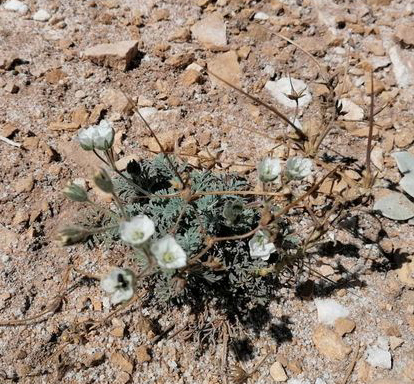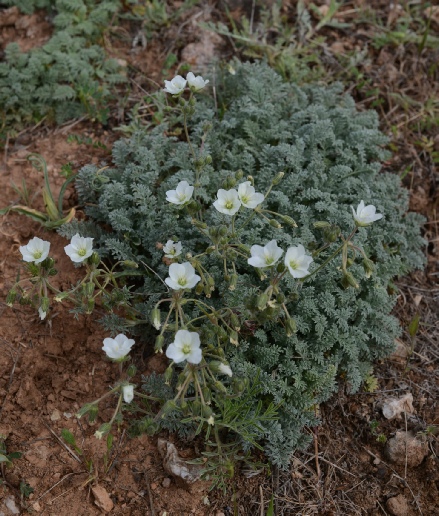Erodium
and California
This site was created and is maintained by Benjamin Coultrup.
Photos all ©Benjamin Coultrup unless otherwise indicated, 1984-
Clade I, Subclade 1
Subgenus Erodium
Clade I, Subclade 2
Subgenus Barbata
Clade II, Subclade 3
Clade II, Subclade 4
-
-
Erodium leucanthum Boiss.
Erect, caespitose perennial, 8-
Leaves: Basal leaves densely 2-

Erodium leucanthum; Denizli-
Inflorescence: Flowering stems glandular-
Fruit: Beak 7cm, glandulose hairy; carpels adpressed villose.
2n=
Distribution: endemic to Turkey; in limestone scree and cliff crevices, at an altitude 1600-

Erodium leucanthum; photo credit: Yasemin Konuralp; from the IGG Facebook Group, Licenced under Creative Commons Attribution-